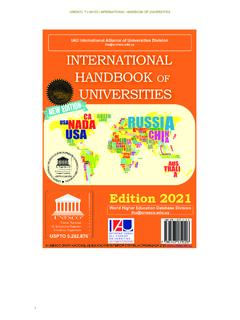Transcription of Jesus Through Middle Eastern Eyes - Westminster Bookstore
1 Jesus Through Middle Eastern eyes CULTURAL STUDIES IN THE GOSPELS K ENNETH E. B AILEY InterVarsity Box 1400, Downers Grove, IL 60515-1426 World Wide Web: : 2008 by Kenneth E. BaileyAll rights reserved. No part of this book may be reproduced in any form without written permission from InterVarsity Press is the book-publishing division of InterVarsity Christian Fellowship/USA , a movement of students and faculty active on campus at hundreds of universities, colleges and schools of nursing in the United States of America, and a member movement of the International Fellowship of Evangelical Students. For information about local and regional activities, write Public Relations Dept., InterVarsity Christian Fellowship/USA, 6400 Schroeder Rd., Box 7895, Madison, WI 53707-7895, or visit the IVCF website at < >.
2 The Scripture quotations quoted herein are from the Revised Standard Version of the Bible (with occasional alterations based upon the author s preferred translation), copyright 1946, 1952, 1971 by the Division of Christian Education of the National Council of the Churches of Christ in the Used by permission. All rights : Cindy KipleImages: clearandtransparent/iStockphoto Antonio Ribeiro/iStockphotoISBN 978-0-8308-7585-6 (digital)ISBN 978-0-8308-7568-4 (print) Front Page 4 Thursday, September 18, 2014 12:22 PM To D AVID M ARK B AILEY With Deep Gratitude for his Choice of Hope over DespairAnd for His Songs in the NightWith Unfading Love Contents Preface ..9 Introduction ..11 P ART 1: T HE B IRTH OF J ESUS 1 The Story of Jesus Birth: Luke 2:1-20 ..25 2 The Genealogy and Joseph the Just: Matthew 1:1-21.
3 38 3 The Savior, the Wise Men and the Vision of Isaiah: Matthew 2:1-12; Isaiah 60:1-7 ..48 4 Herod s Atrocities, Simeon and Anna: Matthew 2:13-18; Luke 2:22-36 ..56 P ART 2: T HE B EATITUDES 5 The Beatitudes 1: Matthew 5:1-5 ..65 6 The Beatitudes 2: Matthew 5:6-12 ..76 P ART 3: T HE L ORD S P RAYER 7 The Lord s Prayer: God Our Father: Matthew 6:5-9 ..91 8 The Lord s Prayer: God s Holiness: Matthew 6:9 .. 104 9 The Lord s Prayer: God s Kingdom and Our Bread: Matthew 6:10-11 .. 113 10 The Lord s Prayer: Our Sins and Evil: Matthew 6:12-13 .. 124 P ART 4: D RAMATIC A CTIONS OF J ESUS 11 The Call of Peter: Luke 5:1-11 .. 135 12 The Inauguration of Jesus Ministry: Luke 4:16-31 .. 147 13 The Blind Man and Zacchaeus: Luke 18:35 19:11 .. 170 P ART 5: J ESUS AND W OMEN 14 Jesus and Women: An Introduction.
4 189 15 The Woman at the Well: John 4:1-42 .. 200 16 The Syro-Phoenician Woman: Matthew 15:21-28 .. 217 17 The Lady Is Not for Stoning: John 7:53 8:11 .. 227 18 The Woman in the House of Simon the Pharisee: Luke 7:36-50 .. 239 19 The Parable of the Widow and the Judge: Luke 18:1-8 .. 261 20 The Parable of the Wise and Foolish Young Women: Matthew 25:1-13 .. 269 P ART 6: P ARABLES OF J ESUS 21 Introduction to the Parables .. 279 22 The Parable of the Good Samaritan: Luke 10:25-37 .. 284 23 The Parable of the Rich Fool: Luke 12:13-21 .. 298 24 The Parable of the Great Banquet: Luke 14:15-24 .. 309 25 The Parable of the Two Builders: Luke 6:46-49 .. 321 26 The Parable of the Unjust Steward: Luke 16:1-8 .. 332 27 The Parable of the Pharisee and the Tax Collector: Luke 18:9-14.
5 343 28 The Parable of the Compassionate Employer: Matthew 20:1-16 .. 355 29 The Parable of the Serving Master: Luke 12:35-38 .. 365 30 The Parable of Lazarus and the Rich Man: Luke 16:19-30 .. 378 31 The Parable of the Pounds: Luke 19:11-27 .. 397 32 The Parable of the Noble Vineyard Owner and His Son: Luke 20:9-18 .. 410 Bibliography .. 427 Indexes .. 437 Preface T HIS BOOK CAME ABOUT IN STAGES . Some of its chapters were origi-nally transcriptions of professionally recorded video lectures. The meticulous workof transcription was done by my dear friend and colleague, Dr. Dale Bowne, pro-fessor of New Testament (emeritus), Grove City College. I am profoundly gratefulto him for all his hard work both in transcribing and in commencing the processof transforming lecture-style material into readable chapters are composed of new material on studies of parables that I pub-lished nearly three decades ago.
6 The majority of these chapters are presented herefor the first time. I am deeply grateful to InterVarsity Press for the privilege ofmaking these findings available to readers interested in examining texts in the lightof traditional Middle Eastern chapters are a selection. The birth of Jesus , Beatitudes, prayer, women inthe ministry of Jesus , dramatic actions and parables are included. The goal is tooffer brief glimpses of some of the treasures that await us as Western isolationfrom Middle Eastern Christian interpretation of the Bible is slowly brought to anend. My purpose is to add new perspectives to our understanding of the text,rather than to rearrange old ones. I am grateful also to Joel Scandrett, my editor and friend, who has patientlyguided this project from beginning to end.
7 Always helpful and insightful, he haswisely urged me to strengthen the work in places of weakness and to clarify thetext in places of obscurity. To him I am profoundly debt to my personal copy editor, Sara Bailey Makari, can never be paid. Shehas broken up my convoluted sentences, straightened my shifting tenses, identi-fied many points of confusion and eliminated excess verbiage. In short, she hascontributed enormously to whatever quality the final product may exhibit. Thankyou, Sara. For more than two decades I have had the rare privilege of the sound advice andwise council of an advisory committee comprising members of the Presbytery of 10 J ESUS T HROUGH M IDDLE E ASTERN E YES Shenango (PCUSA) and more recently of the Episcopal Diocese of highly qualified group of people now includes the Rev.
8 Dr. William Crooks;Rev. Dr. David Dawson; Rev. Dr. Joseph Hopkins; Mr. Thomas Mansell, Attor-ney at Law; Rev. Pamela Malony; Mr. William McKnight, CPA; and Rev. Paton. To all these dear friends I wish to express my long-term gratitude andindebtedness. Many churches and individuals, known and anonymous, have helped supportmy continuing research efforts. Without their assistance I would not have beenable to acquire the resources or complete the work of writing this book. I thinkparticularly of the Eastminster Presbyterian Church, Wichita, Kansas, and TrinityPresbyterian Church, Mercer, Pennsylvania. To all of them I offer my sincerethanks. The more than ten million Arabic-speaking Christians of the Middle East cantrace their origins to the day of Pentecost, where some of those present were fromArabia and heard the preaching of Peter in Arabic.
9 Two bishops from Bahrainattended the Council of Nicaea. 1 Arabic-speaking Christian theologians and exe-getes from roughly A . D . 900 to 1400 produced five centuries of the highest qualityChristian scholarship, quality that is also found in the present. For forty years it was the greatest privilege of my life to have been accepted, en-couraged, loved, sustained, taught and directed by the living inheritors of thatSemitic Christian world. For the good days and the hard days, together throughwars and rumors of wars, I would thank them all. This book is but a flawed at-tempt to learn from their (and our) heritage and Through it to try to think moreclearly about the life and message of Jesus of Nazareth. Soli Deo Gloria!Kenneth E. Bailey 1 Irfan Shahid, Byzantium and the Arabs in the Fourth Century (Washington, : Dumbarton OaksResearch Library and Collection, 1984), p.
10 330. Introduction F OR SIXTY YEARS , FROM 1935-1995, my home was in the Middle a childhood in Egypt and forty years spent teaching New Testament in sem-inaries and institutes in Egypt, Lebanon, Jerusalem and Cyprus, my academic ef-forts have focused on trying to understand more adequately the stories of the Gos-pels in the light of Middle Eastern culture. This book is a part of that written sources for such a quest are ancient, medieval and modern. As re-gards ancient literature (Aramaic, Hebrew, Syriac and Arabic), I am not solely in-terested in the Old Testament, the intertestamental literature, and the Dead SeaScrolls. The post-New Testament Jewish literature (Mishnah, Midrash Rabbahand the two Talmuds) is also important. In addition to Judaica, there is the liter-ature of the Eastern Semitic-speaking churches.




